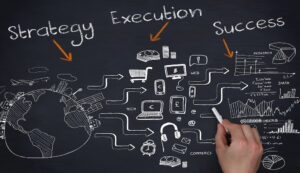As an IT executive with over 25 years of experience steering organizations through seismic technological shifts, I’ve learned that the role of IT is not simply about keeping the lights on — it’s about illuminating the path forward. In 2025, the pace of innovation is accelerating, and the stakes for technology leaders have never been higher. Emerging technologies are reshaping industries, cyber threats are growing in sophistication, and the pressure to deliver measurable business value is intensifying.
For CIOs and CTOs, success hinges on balancing immediate operational demands with strategic investments that future-proof the organization. Below, I outline the top technology priorities for 2025 and how decision-makers can turn these challenges into opportunities for growth and innovation.
1. AI and Machine Learning: From Experimentation to Enterprise Impact
Artificial intelligence has moved beyond the hype cycle. In 2025, the focus shifts to scaling AI initiatives that deliver tangible ROI. Organizations are deploying generative AI (GenAI) and machine learning (ML) across functions like customer service, supply chain optimization, and predictive analytics. For example, retailers are using AI-driven personalization engines to boost customer lifetime value by 20–30%, while manufacturers are reducing downtime by 40% through predictive maintenance algorithms.
Key Strategies for CIOs and CTOs:
- Prioritize High-Impact Use Cases: Align AI projects with business outcomes, such as revenue growth or cost reduction. Pilot initiatives in areas like automated fraud detection or AI-enhanced DevOps pipelines.
- Embed Ethics and Governance: Establish clear guidelines for AI accountability, bias mitigation, and transparency. Over 60% of CIOs now report directly to their boards on AI ethics.
- Build Cross-Functional AI Teams: Break down silos by creating centers of excellence (CoEs) that unite IT, data scientists, and business units. Capital One’s AI-driven cloud transformation, for instance, succeeded by embedding engineers directly into product teams.
Pitfall to Avoid: Treating AI as a standalone initiative. AI thrives when integrated into existing workflows and paired with robust data governance.
2. Cybersecurity: Zero Trust and AI-Driven Defense
Cyberattacks are now AI-powered, automated, and increasingly targeted at cloud environments. In 2025, 70% of organizations will adopt zero-trust security frameworks, up from 35% in 2024. The rise of quantum computing further complicates the landscape, with post-quantum cryptography becoming a priority to safeguard against future threats.
Key Strategies for CIOs and CTOs (and CISOs):
- Implement Zero Trust by Default: Assume breach and enforce strict identity verification, least-privilege access, and micro-segmentation. Microsoft’s Azure migration, for example, reduced vulnerabilities by 80% through zero-trust principles.
- Leverage AI for Threat Detection: Deploy AI-driven tools like extended detection and response (XDR) to analyze threats in real time. Recent studies show that 70% of organizations implementing XDR experienced significant improvements in their threat detection capabilities within the first six months.
- Prepare for Quantum Risks: Begin transitioning encryption standards to quantum-resistant algorithms, especially for sensitive data with long-term value.
Pitfall to Avoid: Over-relying on legacy security tools. Modern threats demand adaptive, AI-native defenses.
3. Data Democratization: Fueling Innovation Without Chaos
Data is the lifeblood of AI and digital innovation, but only 15% of organizations have mastered data governance. In 2025, CIOs must balance accessibility with control, enabling teams to leverage data while ensuring quality and compliance.
Key Strategies for CIOs and CTOs:
- Break Down Data Silos: Use cloud-native platforms like Snowflake or Databricks to create unified data lakes. By centralizing customer data in Databricks, PetSmart built robust customer profiles, enabling advanced segmentation, targeted marketing, and personalized experiences across channels. This approach drove double-digit growth and enhanced customer loyalty.
- Democratize Insights: Equip non-technical teams with low-code analytics tools. For example, a global bank reduced loan approval times by 35% by giving branch managers self-service dashboards.
- Enforce Governance Automatically: Implement policy-as-code to audit data usage and automate compliance checks.
Pitfall to Avoid: Treating data governance as an IT-only responsibility. Collaborate with legal and compliance teams to align policies with regulatory demands.
4. Cloud and Infrastructure: Agility Meets Accountability
By 2025, 85% of enterprises will adopt hybrid or multi-cloud strategies, but cost overruns remain a top concern. CIOs and CTOs are prioritizing FinOps (financial operations) to align cloud spending with business value, while modernizing legacy systems that hinder innovation.
Key Strategies for CIOs and CTOs:
- Optimize Cloud Economics: Use tools like AWS Cost Explorer or Azure Cost Management to track and rightsize resources.
- Modernize Legacy Systems: Refactor monolithic applications into microservices. Accenture’s federal IT team, for instance, migrated 200 legacy apps to the cloud in six months while training staff on DevOps practices.
- Embrace Edge Computing: Deploy IoT and edge solutions for low-latency use cases, such as real-time inventory tracking in retail.
Pitfall to Avoid: “Lift-and-shift” migrations without rearchitecting. True cloud value comes from scalability and innovation, not just cost savings.
5. Workforce Transformation: Bridging the Skills Gap
The AI revolution has created a talent paradox: 58% of IT leaders report skills shortages, yet up to 40% of existing roles will be disrupted by automation. Upskilling, reskilling, and cultural adaptability are now existential priorities.
Key Strategies for CIOs and CTOs:
- Build AI Literacy: Partner with platforms like Coursera or Pluralsight to offer certifications in prompt engineering and ML ops.
- Foster a “Culture of Continuous Learning”: Gamify training programs and reward innovation. Google’s “20% time” policy, which lets employees pursue passion projects, has driven breakthroughs like Gmail.
- Leverage Gig Talent: Tap into freelance marketplaces for niche skills like quantum computing or ethical AI design.
Pitfall to Avoid: Assuming existing staff can’t adapt. With the right training, up to 70% of employees can transition into AI-augmented roles.
6. Emerging Technologies: The Next Frontier
Quantum computing, autonomous systems, and spatial computing (AR/VR) are no longer science fiction. In 2025, forward-thinking CIOs are laying the groundwork for these disruptors:
- Quantum-Inspired Solutions: Use hybrid quantum-classical algorithms for optimization in logistics or drug discovery.
- Autonomous IT Operations: Deploy AIOps to resolve an overwhelming majority of incidents without human intervention.
- Spatial Computing: Pilot AR tools for remote collaboration or virtual product demos.
Key Strategy: Start small. Partner with startups or academia to test use cases without overcommitting budgets.
7. Sustainability and Ethics: The New Table Stakes
Regulators and consumers now demand responsible tech practices. CIOs and CTOs are prioritizing green IT (e.g., energy-efficient data centers) and ethical AI frameworks to build trust and comply with laws like the EU AI Act.
Key Strategy: Align tech investments with ESG goals. Microsoft’s “carbon-aware” cloud regions, for instance, optimize workloads based on renewable energy availability.
The Key Question for CIOs / CTOs
Is your technology strategy focused on incremental efficiency — or are you building the capabilities to redefine your industry?
If your priorities are limited to cost-cutting and legacy modernization, you risk becoming a footnote in the digital economy. The CIOs and CTOs who will lead in 2025 are those who treat AI, data, and cloud not as tools, but as catalysts for reinvention. They’re partnering with CEOs to launch new revenue streams, embedding ethics into every technology decision, and cultivating workforces that thrive amid constant change.
Final Thought
The technology priorities of 2025 aren’t a checklist — they’re interconnected strands of a larger transformation. CIOs who master this integration will position their organizations not just to adapt, but to shape the future. The question isn’t whether you can afford to invest in these priorities, but whether you can afford not to.




